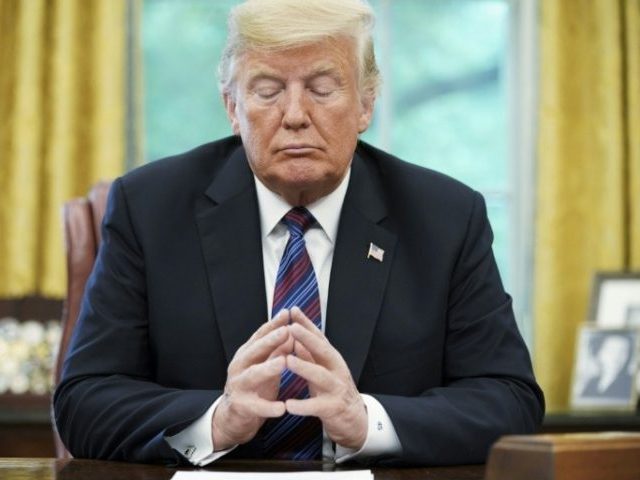President Donald Trump correctly described the new trade pact with Mexico as one of the largest ever, prompting the New York Times to incorrectly accusing him of spreading a falsehood.
“This is one of the largest trade deals ever made. Maybe the largest trade deal ever made,” Trump said on Monday.
Here’s what the New York Times wrote in reaction:
Mr. Trump announced on Monday that the United States and Mexico had reached a preliminary agreement to revise key portions of the North American Free Trade Agreement. That is not the same thing as signing a new bilateral deal.
Nor would a United States-Mexico trade agreement potentially rank as the “largest trade deal ever made.”
It is premature to consider the bilateral agreement a done deal. Canada, the third country that was a party to Nafta in 1993, has not yet agreed to the changes. Participating in Monday’s announcement via conference call, Mr. Peña Nieto, the outgoing Mexican president, said he hoped Canada would rejoin the negotiations.
Congress would also need to approve the changes before the trade deal could go into effect.
Even if Mexico eventually agreed, and Congress approved the two-country deal, it would by definition be smaller than Nafta, a three-country deal. In 2017, trade between the United States and Mexico totaled $615.9 billion in goods and services. That same year, trade between the United States and Canada was about $57 billion more, at $673.1 billion.
Trump is right. The New York Times is wrong.
Even a deal between the U.S. and Mexico that leaves out Canada would be the largest trade deal ever. When NAFTA was put in place, trade between the U.S. and Canada and Mexico combined amounted to less than $400 billion, less than trade between the U.S. and Mexico today.
Last year, the European Union and Japan concluded a trade agreement touted as “the world’s largest free trade agreement.” The total trade in goods between the EU and Japan, however, is just around $150 billion.
The New York Times points to the Trans-Pacific Partnership as a larger agreement but Hillary Clinton, Bernie Sanders, and Donald Trump all opposed U.S. signing on to that agreement. While still a big agreement without the U.S., it is no longer a Goliath. It’s sans-U.S. version now covers just 14 percent of global gross domestic product, less than that covered by an agreement between U.S. and Mexico.
The Times is closer to the mark when it claims that the “Uruguay Round of trade talks that culminated in 1994 created the World Trade Organization” was a larger agreement. It took seven years and involved negotiators from 117 different countries. But it did not produce a detailed “trade agreement” of the sort Trump was discussing. Rather, its “Final Act” created the WTO and set the agenda for a series of trade agreements that would follow. Comparing it to either NAFTA or the new trade pact is like comparing apples to an orange grove.
In any case, Trump did not say the deal was certainly the largest ever. He said it was “one of the largest” and “maybe the largest.”
And on that, he was certainly correct.

COMMENTS
Please let us know if you're having issues with commenting.